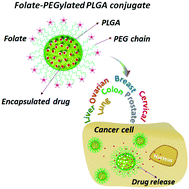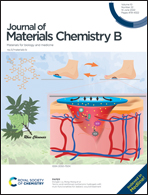Progress in the drug encapsulation of poly(lactic-co-glycolic acid) and folate-decorated poly(ethylene glycol)–poly(lactic-co-glycolic acid) conjugates for selective cancer treatment
Abstract
Poly(lactic-co-glycolic acid) (PLGA) is a US Food and Drug Administration (FDA)-approved polymer used in humans in the forms of resorbable sutures, drug carriers, and bone regeneration materials. Recently, PLGA-based conjugates have been extensively investigated for cancer, which is the second leading cause of death globally. This article presents an account of the literature on PLGA-based conjugates, focusing on their chemistries, biological activity, and functions as targeted drug carriers or sustained drug controllers for common cancers (e.g., breast, prostate, and lung cancers). The preparation and drug encapsulation of PLGA nanoparticles and folate-decorated poly(ethylene glycol)–poly(lactic-co-glycolic acid) (FA–PEG–PLGA) conjugates are discussed, along with several representative examples. Particularly, the reactions used for preparing drug-conjugated PLGA and FA–PEG–PLGA are emphasized, with the associated chemistries involved in the formation of structures and their biocompatibility with internal organs. This review provides a deeper understanding of the constituents and interactions of PLGA-conjugated materials to ensure successful conjugation in PLGA material design and the subsequent biomedical applications.

- This article is part of the themed collection: Journal of Materials Chemistry B Recent Review Articles


 Please wait while we load your content...
Please wait while we load your content...